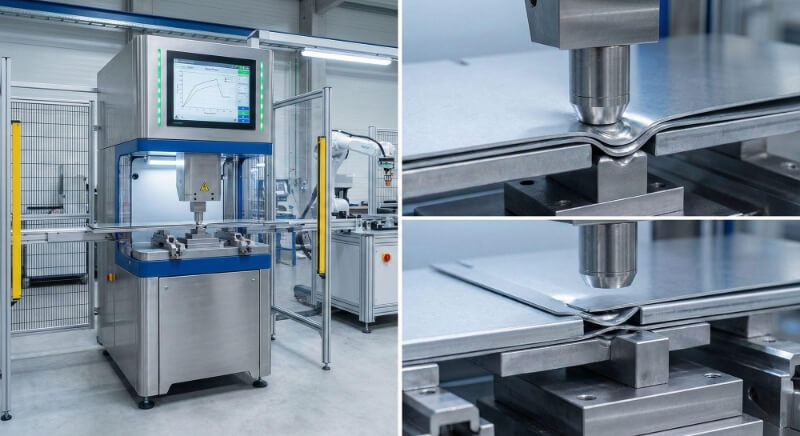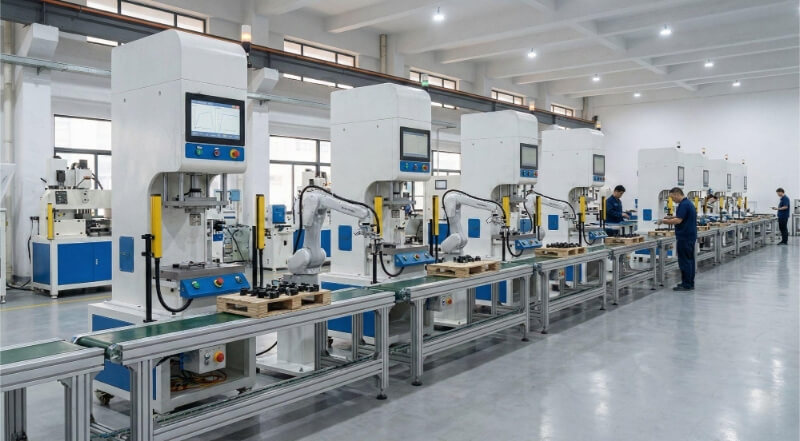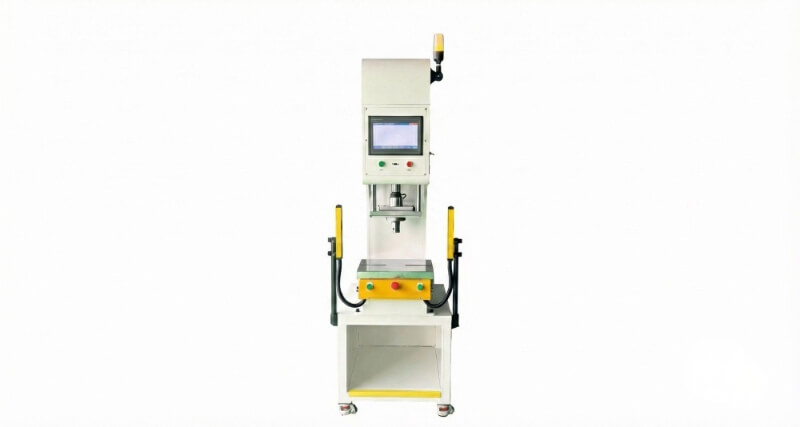Welding is the process of combining two pieces of metal using heat and, sometimes, pressure. How these pieces are joined—known as a welding joint—determines the strength and appearance of the final product. Knowing the five basic joint types helps you make better decisions for your metal fabrication needs.
Want to master these joints to improve your welding skills? Let’s look at each type in detail.
What are welding joints, and why are they important?
Welding joints are the meeting points where two or more metal pieces connect through the welding process. They form the foundation of any welded structure and determine its overall strength and functionality.
These connections determine how loads spread through a structure. A properly designed and executed joint can withstand incredible forces, while a poor one becomes the failure point.
Every welding project starts with choosing the right joint. This choice affects material costs, labor time, and, most importantly, the quality of the finished product.
The following are the 5 basic types of welded joints recognized by the American Welding Society:
- Butt joint
- Lap joint
- Edge joint
- Tee joint
- Corner joint
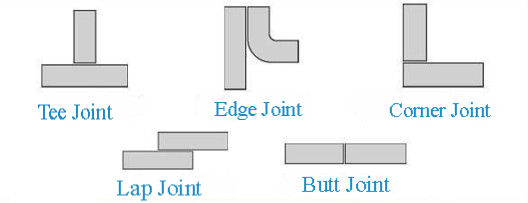
Butt Joint
The butt joint is one of the most basic and widely used welding joints. These joints form when two metal pieces are placed edge to edge.
Structural Characteristics and Common Applications
Butt joints are simple in design but highly effective. They align two pieces of metal along their edges, creating a flat or slightly curved surface. This joint is ideal for applications where strength and smoothness are critical.
You’ll find butt joints in pipelines, structural steelwork, and sheet metal fabrication. They’re also common in automotive and aerospace industries, where precision and durability are essential.
Types of Butt Joint Welds
Butt joints can be customized based on the material thickness and application. Here are the most common types:
Square Groove Weld
This is the simplest type of butt joint weld. The edges of the two pieces are square and fit together without any gaps. It’s best for thin materials where minimal welding is needed.
V-Groove Weld
A V-groove weld involves cutting a V-shaped groove into the edges of the materials. This allows for deeper penetration and stronger welds, making it ideal for thicker materials.
J-Groove Weld
A J-groove weld has one edge shaped like a “J.” It’s used when one side of the joint is thicker. This design provides good strength while reducing the amount of welding required.
U-Groove Weld
A U-groove weld has a curved groove shaped like a “U.” It’s used for very thick materials and provides excellent penetration and strength.
Advantages and Disadvantages
Advantages:
- Simple to prepare and weld.
- Provides a strong, seamless connection.
- Works well for both thin and thick materials.
- Suitable for a wide range of applications.
Disadvantages:
- Requires precise alignment for best results.
- Thicker materials may need complex groove preparations.
- It can be prone to distortion if not welded carefully.

Corner Joint
Corner joints form when two pieces meet at an angle, typically 90 degrees. They create the edges and corners of boxes, frames, and containers.
Structural Properties and Usage
Corner joints connect two workpieces at their edges, forming an L-shape. For maximum strength, the weld can be applied to either the inside or outside of the angle or both.
These joints handle forces from multiple directions. They resist bending and twisting better than butt joints but can be vulnerable to certain types of stress.
Corner joints are found in metal cabinets, boxes, frames, and tanks. They’re perfect for creating right-angle structures like window frames, electrical enclosures, and furniture.
Variations: Closed vs. Open Corner Joints
Corner joints come in two main variations:
Closed Corner Joints:
Closed corner joints have the end of one piece butting against the surface of the other piece. This creates a clean, finished appearance from one side.
This style is typical in visible corners of furniture and decorative metalwork. The joint can be reinforced with an inside fillet weld while maintaining a clean outside appearance.
Cabinet makers and architectural metal fabricators often prefer closed corners for their professional look.
Open Corner Joints:
Open corner joints have both pieces meeting at their edges. This forms an open right angle with no piece extending beyond the other.
These joints provide better weld access from both sides. They’re easier to fit up and weld because both edges are visible during assembly.
Open corners work well in structural applications where strength matters more than appearance.
Strengths and Weaknesses
Strengths:
- Easy to assemble and weld.
- Provides strong, rigid connections.
- Works well for both thin and thick materials.
- Versatile and suitable for many applications.
Weaknesses:
- It can be prone to distortion if not welded carefully.
- Requires precise alignment for best results.
- Open corner joints may need additional finishing for a smooth appearance.
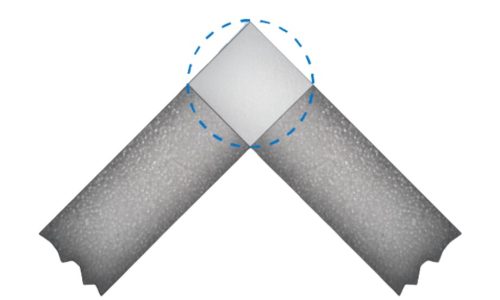
Tee Joint
Tee joints occur when one piece sits perpendicular to another, forming a T shape. They’re among the most common joints in metal fabrication and construction.
How does It Differ from Other Joints?
Unlike butt or corner joints, tee joints have one piece sitting on the surface of another rather than meeting at the edges. This creates a 90-degree connection with a different force distribution.
The perpendicular arrangement means the joint primarily uses fillet rather than groove welds. This changes the welding approach and penetration requirements.
Tee joints naturally create a strong structure because the vertical member helps distribute loads across more of the base piece, making them ideal for supporting weight.
Typical Applications in Manufacturing and Construction
Tee joints are common in:
- Construction: Building frames, bridges, and roof trusses.
- Manufacturing: Machinery frames, supports, and equipment stands.
- Automotive: Chassis and roll cages.
- Furniture: Tables, chairs, and shelving units.
These joints are perfect for creating strong, stable connections in load-bearing structures.
Load-Bearing Considerations
Tee joints are designed to handle significant loads. However, the weld must be strong enough to resist stress and fatigue. Key considerations include:
- Weld size and penetration: Ensure the weld is deep enough to handle the load.
- Material thickness: Thicker materials may require multiple weld passes.
- Joint preparation: Clean and align the pieces correctly to avoid weak spots.
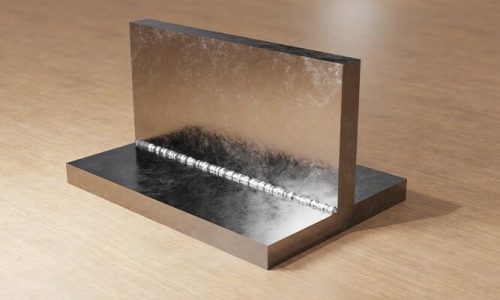
Lap Joint
Lap joints form when two pieces of metal overlap and are welded along the edges. This simple design creates strong connections with minimal preparation.
Design and Functionality
In a lap joint, two metal pieces overlap by a specific amount and are then welded along one or both edges of the overlap. The overlap typically ranges from 3 to 5 times the thickness of the thinner material.
These joints work through surface contact rather than edge contact. This spreads forces across a larger area compared to butt joints, creating stronger connections for specific applications.
The welds in lap joints are almost always fillet welds applied to the edges of the overlapping pieces. This makes them simple to create with most welding processes.
How Does It Enhance Strength and Durability?
Lap joints are strong because the overlapping design distributes stress across a larger area. This makes them ideal for applications where the joint will face heavy loads or vibrations.
The weld along the edges adds extra strength, and the overlapping layers provide additional support. This design also helps prevent cracks and failures, making lap joints durable and reliable.
Use Cases in Metalworking
Lap joints are commonly used in:
- Automotive: Body panels, frames, and exhaust systems.
- Construction: Roofing, siding, and structural supports.
- Manufacturing: Tanks, containers, and machinery parts.
- Shipbuilding: Hulls and deck structures.
These joints are perfect for applications where strength, simplicity, and ease of assembly are essential.

Edge Joint
Edge joints connect two pieces of metal side by side along their edges. They’re one of the simpler joint designs but have specific uses in metalworking.
Purpose and Design Variations
Edge joints fuse two pieces along their edges without overlapping. The pieces sit flat in the same plane, their edges touching or having a small gap between them.
The standard edge joint has straight edges meeting with minimal gap. Variations include:
- Flanged edge joints where the edges are bent up before welding
- Reinforced edge joints with added backing strips
- Beveled edge joints for thicker materials
These joints work best with relatively thin materials where the weld can penetrate the entire thickness. For sheet metal under 1/4 inch, edge joints provide a clean, flat connection.
When to Use an Edge Joint?
Edge joints are ideal for:
- Thin materials where other joints might be too bulky.
- Applications require a smooth, seamless finish.
- Sheet metal projects like enclosures, ductwork, or panels.
They are unsuitable for heavy load-bearing applications but work well for lightweight structures.
Pros and Cons Compared to Other Joints
Pros:
- Simple to prepare and weld.
- Provides a clean, smooth finish.
- Works well for thin materials.
- Distributes stress evenly along the joint.
Cons:
- They are not as strong as butt or lap joints for heavy loads.
- Limited to thin materials.
- Requires precise alignment for best results.
Edge joints are an excellent choice for lightweight, aesthetic applications. While they may not be the most potent option, they excel in simplicity and finish quality.
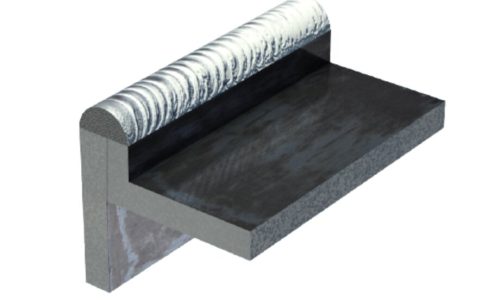
Here’s a quick comparison of the 5 welded joint types:
| Joint Type | Strength | Preparation Required | Material Efficiency | Best Applications |
|---|---|---|---|---|
| Butt Joint | Medium | High | Excellent | Flat surfaces, pipes |
| Lap Joint | High | Low | Good | Overlapping sheets, automotive |
| T-Joint | Very High | Medium | Good | Framework, structural supports |
| Corner Joint | High | Medium | Good | Boxes, enclosures, frames |
| Edge Joint | Low | Low | Excellent | Thin materials, decorative work |
Factors Affecting Welding Joint Performance
When you work with welding joints, several key factors determine how well they’ll perform. Let’s look at what affects your welding results.
Material Type and Thickness
The type of metal you’re welding affects everything. Steel, aluminum, and stainless steel each need different welding methods and settings.
Thickness matters too. Thin metals heat up fast and can burn through, while thick metals need more heat and multiple passes.
Think about this: welding 1/8-inch aluminum requires totally different settings than welding 1/2-inch steel. For the best results, your choice of filler metal must match your base material.
Joint Preparation and Fit-Up
Good joints start before any welding happens. Clean metal surfaces free from rust, paint, oil, and dirt create stronger connections.
Fit-up refers to how well the pieces align before welding. Gaps or misalignment can cause uneven stress and weaken the joint. Take time to prepare and fit the pieces correctly for a strong, reliable weld.
Welding Position and Accessibility
The position of your weld affects how hard it is to complete. Flat welds (on a table) are the most straightforward, while overhead welds are the most challenging.
Limited access to your joint means you need special equipment or techniques. Tight corners or enclosed spaces make welding much harder.
Plan your work so the most critical welds happen in the most favorable positions when possible.
Heat Input and Distortion Control
Heat input is the amount of heat applied during welding. Too much heat can warp or weaken the material, while too little heat can result in incomplete fusion.
Distortion happens when materials expand and contract unevenly due to heat. To control distortion, use techniques like clamping, preheating, or welding in small sections.
Common Mistakes in Welding Joint Selection and How to Avoid Them
Choosing the right welding joint is only half the battle. Avoiding common mistakes during the welding process is just as important. Let’s look at three frequent issues and how to prevent them.
Misalignment Issues
Misalignment happens when the pieces being welded are not correctly aligned. This can lead to weak joints, uneven stress distribution, and even structural failure.
How to Avoid It:
- Use clamps, jigs, or fixtures to hold the pieces in place.
- Double-check alignment with a square or measuring tool before welding.
- Tack weld the pieces first to ensure they stay in position.
Poor Weld Penetration
Poor penetration occurs when the weld doesn’t fully fuse the materials. This creates weak spots that can fail under stress.
How to Avoid It:
- Adjust the welding current and speed to match the material thickness.
- Use proper joint preparation, like beveling or grooving, for thicker materials.
- Ensure the welding angle and technique allow for deep penetration.
Overlooking Heat Distortion
Heat distortion happens when welding causes the material to warp or bend. This is especially common with thin materials.
How to Avoid It:
- Weld in small sections and allow time for cooling between passes.
- Use tack welds to hold the pieces in place and reduce movement.
- Clamp the materials securely to minimize warping.
Conclusion
Welding joints are the foundation of strong, durable structures. The five basic types—butt, corner, edge, lap, and tee joints—each serve specific purposes and are suited to different applications. Choosing the right joint depends on load requirements, material type, and welding process.
Need help selecting the right joint type for your application? Our experienced team can guide you through material selection, design considerations, and manufacturing processes. Contact us today for a free consultation and quote.
Hey, I'm Kevin Lee

For the past 10 years, I’ve been immersed in various forms of sheet metal fabrication, sharing cool insights here from my experiences across diverse workshops.
Get in touch

Kevin Lee
I have over ten years of professional experience in sheet metal fabrication, specializing in laser cutting, bending, welding, and surface treatment techniques. As the Technical Director at Shengen, I am committed to solving complex manufacturing challenges and driving innovation and quality in each project.

